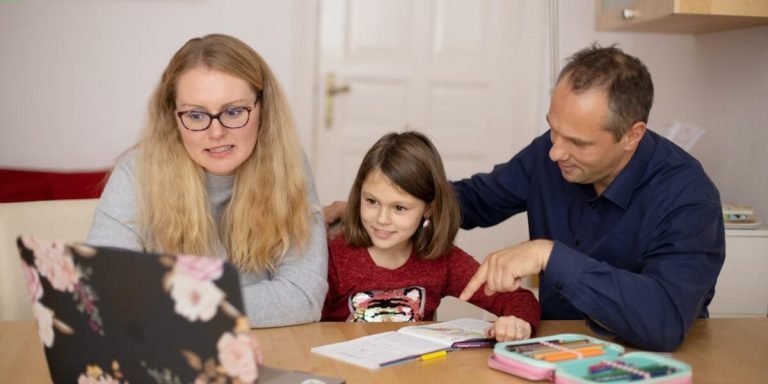Homeschooling vs Public Schooling: A Comparative Analysis for Parents
The decision between “homeschooling vs public schooling” is a crucial one that many parents grapple with. Both options come with their distinctive benefits and challenges, making the choice not as black-and-white as it may initially seem. This comparative analysis will demystify each educational path and aim to provide insights for parents navigating this dilemma.
In essence, homeschooling offers flexibility in curriculum design coupled with personalized learning experiences while public schooling presents a structured environment where children can develop social skills through regular interactions. It’s essential to carefully weigh these factors against individual child needs before deciding which education model best fits your family situation.
Did you know?
Did you know that the National Home Education Research Institute reports homeschooling outperforms public schooling by 15 to 30 percentile points across all subjects?
Understanding the Differences: Homeschooling vs Public Schooling
Homeschooling and public schooling represent two broad approaches to childhood education, each with its unique methods of integrating technology. The ongoing advancements in the digital sphere continue to reshape how teaching and learning takes place in both environments today.
In homeschooling, the advent of e-learning platforms has opened up a wealth of resources for parents stepping into the role of educators. These online tools are curated carefully to align with robust academic standards while also catering to individualized learning styles typical within home-school scenarios. One distinct advantage here is that these technological aids allow flexible pacing suitable for kids’ natural rhythms – allowing children more time on challenging concepts or skipping ahead when they grasp topics quickly.
On the other hand, public schools provide technology-integrated classrooms as standard practice aiming at collaborative group work amongst diverse groups from an early age fostering social skills alongside academia— often critical spaces where students learn essential 21st-century skills such as coding or creating multimedia projects using various tech applications. Despite this benefit though, some argue that large classroom sizes may sometimes dilute personalized attention resulting from mass-paced instruction – an aspect homeschooled children tend not face.
Yet irrespective of different methodologies employed by homeschoolers versus traditional school setups; it’s apparent that proper integration of technology remains crucial across all spectra’s scope: enhancing engagement levels while reinforcing key subjects thereby making them easily relatable and therefore easier understood by young minds overall.
Examining Academic Outcomes and Student Performance
Analyzing the academic outcomes and student performance in both homeschooling and public schooling sectors is an integral part of examining their differences. The application of technology integration plays a critical role here, especially in this modern age.
Based on recent data gathered from various sources last year 2022 showed that homeschooled students tend to outdo their counterparts when it comes down to standardized tests or college entrance exams such as SATs or ACTs – a clear indication that home-based studies have no barriers against achieving sterling results.
On the flip side though, these test scores only demonstrate one aspect of academic achievement – knowledge comprehension but not necessarily skills like teamwork or social interaction which are equally vital for growing children who need varied exposure beyond bookish wisdom.
Public school systems also deserve credit where its due: they provide vast resources inclusive digital tools which can be accessed by all learners irrespective underprivileged backgrounds– thereby leveling potential inequality gaps among students during this digitized era.
Socialization Factors in Home Education Versus Traditional Schools
When comparing homeschooling vs public schooling, one of the primary concerns that often comes up is socialization. How do these two environments differ and what potential impact can they have on a child’s development?
In traditional schools, children are naturally exposed to diverse groups – classmates from different backgrounds, teachers with varied teaching styles and specialties. This environment promotes social skill-building as kids learn how to interact under guided supervision.
Homeschooling provides an alternate sphere for interaction. Apart from family members playing pivotal roles in their learning journey, homeschoolers also engage with fellow peers during community activities or co-op classes online – thanks to the technology integration in education which has made interactions easier regardless of physical locations.
Despite less conventional school surroundings, research indicates no significant difference between homeschooled students’ ability to function socially versus those attending traditional schools. They exhibit confidence while interacting across all ages compared to traditionally schooled counterparts who commonly report fitting into cliques within age-specific groupings only.
Curriculum Flexibility and Customization in Homeschooling
The world of education has evolved significantly over the years with technology playing a key role in this transformation. One area where its impact is notably evident is Curriculum Flexibility and Customization, especially in homeschooling.
Homeschooling offers an unparalleled level of customization when compared to public schooling—thanks largely to advancements in educational technology. Learning no longer confines within standard set textbooks but extends far beyond it through interactive apps, online courses, digital platforms and innovative learning tools catering specifically towards the distinct learning style of each student.
In contrast to conventional curriculum delivered via public schools which tends to adopt one-size-fits-all approach; homeschooling leverages tech-integration for creating tailored curricula that suit individual learner’s pace, interest as well as strength areas. With artificial intelligence tracking progress real-time plus virtual reality aiding conceptual understanding; home educators are now equipped better than ever before for delivering personalized instruction that maximizes academic potential while ensuring holistic development.
Moreover,the modularity offered by edtech solutions facilitates easy adaptability- letting parents or tutors make swift changes based on ongoing assessments thus enabling dynamic course correction throughout academic journey.This kind of agile learning environment mirrors constantly evolving modern workplaces thereby developing requisite skills among students from early age itself.
Tailoring Learning to Child’s Interests and Pace
Tailoring a child’s learning to match their interests and pace is one of the key advantages of homeschooling. The flexibility it offers, especially when compared with public schooling systems, paves the way for an education system that suits individual needs.
One central aspect parents should keep in mind while considering homeschooling vs public schooling is not just what children learn but how they learn it. It’s highly relevant given this era where technology has been ingrained into every facet of our lives including education.
With homeschooling, there are greater opportunities for integrating personal interest-led subjects alongside conventional ones. For instance, if your child shows exceptional artistry at a young age or demonstrates curiosity towards coding or robotics – these can be integrated into day-to-day lessons instead of being additional extracurricular activities like in most traditional schools.
Another critical factor involves pacing—every child learns differently and flourishes under varied timelines. Homeschooling enables you to present new information at the speed your kid finds comfortable without needless pressure from competitive standardized assessments often found within public school settings.
Furthermore, well-chosen edtech applications play pivotal roles here making educational content more engaging while ensuring vital skills learned remain fun-filled experiences; establishing concepts far deeper than mere rote memorization common among students facing exams’ stress due largely to rigid structured curriculums typical with regular institutionalized learning models.
Adapting Educational Materials for Diverse Learning Needs
In the realm of homeschooling vs public schooling, one significant advantage that parents often cherish is curriculum flexibility and customization. As we steer towards a more personalized approach in child education, it becomes imperative to adapt educational materials for diverse learning needs.
Homeschooling allows you to curate methods most suitable for your child’s unique strengths and weaknesses. This ensures they are not left behind or struggling with concepts difficult for them while proving too easy for peers – a common scenario in public school settings.
Technology integration has elevated this facet dramatically. Applications equipped with artificial intelligence now understand each learner’s pace and tailor-fit content accordingly. For instance, if your kiddo struggles with multiplication tables but sails smoothly through division puzzles – there’s an app customizing its lessons based on these insights!
Simultaneously, children who need additional support aren’t overlooked as advanced analytics detect problem areas early enough allowing parents/educators ample time to intervene.
Moreover, augmented reality (AR) offers immersive experiences making subjects like history or geography come alive right within their study room! Children no longer have to memorize facts about Egypt when they can virtually walk amidst pyramids.
On another note- Students fond of outdoors get opportunities harnessing GPS technology guided nature trails keeping science engaging while comprehending photosynthesis hands-on!
The power of internet means limitless resources available at fingertips extending from simple video tutorials up-to interactive 3D models simplifying complex topics like cell structure etc almost effortlessly.
The Role of Parental Involvement in Education Choices
Parental involvement in a child’s education has always been an integral part of their academic success. With the advent of technology, this role becomes even more significant as parents grapple with decisions about homeschooling versus public schooling. As we move forward into 2023, the dynamics between these two educational styles are becoming increasingly nuanced thanks to technological advancements that bridge gaps and create opportunities.
A parent considering homeschooling now has access to online courses, virtual tutors, digital textbooks and interactive learning platforms that can provide a comprehensive curriculum comparable to what is offered by traditional schools. It enables them to be actively involved in tailoring their children’s education according to individual needs while also ensuring they aren’t missing out on any key aspects of learning due each subject having state-of-the-art applications designed specifically for home-school students.
Meanwhile, public schools have not been left behind in embracing technology integration either. Schools around the world are implementing tools such as smart boards or blended learning methods where half the instruction happens through digital media enhancing engagement levels especially among younger pupils who might find traditional teaching monotonous.
The choice between homeschooling and public schooling lies largely with how comfortable parents are adopting new technologies for educating young minds at home compared against sending them off each morning trusting teachers aided by similar tech but inside classrooms within school buildings away from parental watchful eyes during day hours until return.
Balancing Responsibilities: Teacher-Parent versus Supportive Guardian
Homeschooling vs public schooling has become a rising conversation amongst many parents and educators. As the Role of Parental Involvement in Education Choices continues to evolve, it’s important for us to understand how this balance between Teacher-Parent versus Supportive Guardian plays out.
When we talk about homeschooling, technology integration comes as a natural progression. It allows parents acting as teachers not only to facilitate their child’s learning at home but also makes education more interactive and engaging than ever before. Many online platforms now offer comprehensive curricula that follow national norms while simultaneously providing the flexibility homeschoolers enjoy.
On the other hand, there are parents who choose Public Schooling yet want an active role in their children’s education – they don’t want to be just supportive guardians; they strive for deeper involvement—a collaborative relationship with teachers & school administration.
Impact on Family Dynamics: Commitment Required for Home Education
The decision between homeschooling vs public schooling often boils down to individual family dynamics and the level of commitment parents can afford towards home education. The integration of technology in education has significantly simplified this process, allowing many families to opt for a mix-and-match approach.
Homeschooling requires a strong sense of dedication from both children and parents. They need to ensure time management, discipline, and structured learning alternatively away from traditional classroom environments. Parents now become their child’s main educators- thus needing high levels of patience and understanding.
In contrast with public school where routines are imposed by external authorities, homeschoolers have increased flexibility when arranging schedules around family needs or preferences. This could be an advantage but also demands self-imposed structure on part of everyone involved which might be more difficult than it seems initially.
Conclusion
In the grand scheme of things, choosing between homeschooling vs public schooling is a deeply personal decision. Each has its strengths and unique offerings that cater to different child’s needs and parental expectations. What matters most is what fits best with your lifestyle, beliefs, educational goals for your child while considering their personality traits.
Remember that no choice is set in stone, and adjustments can be made as you go along this exciting journey of educating children. Feel free to explore our website further for invaluable resources on educating youngsters; we offer ample support material not only for parents but also educators who guide them every day through this critical phase of life.







